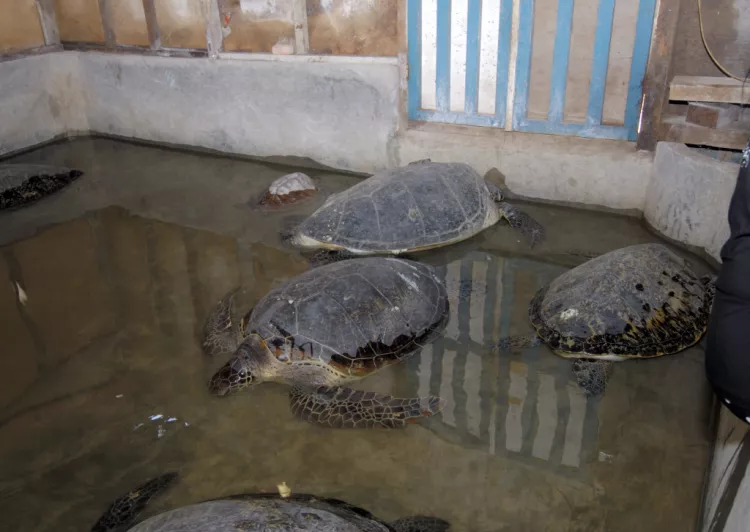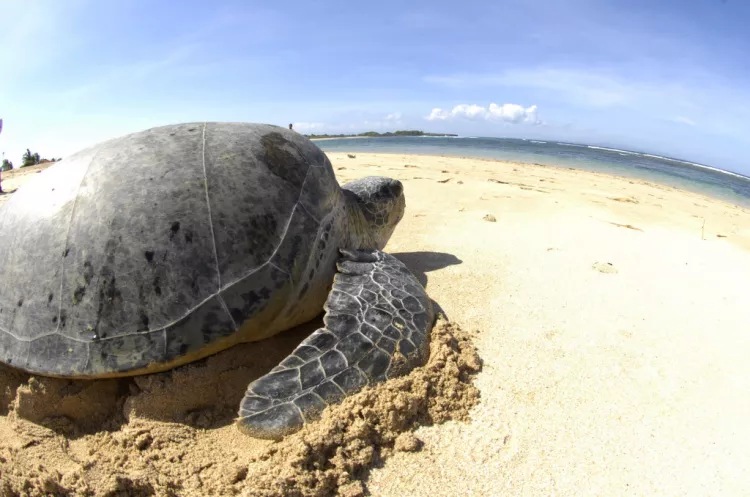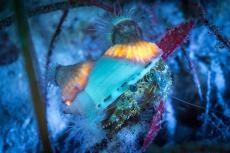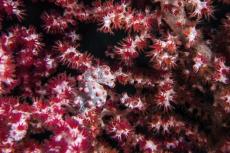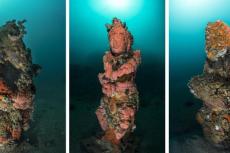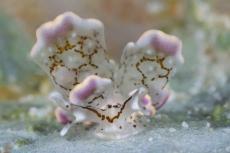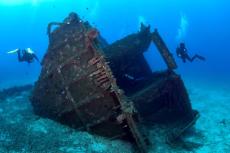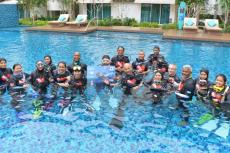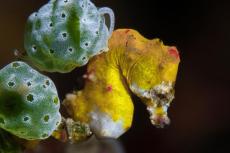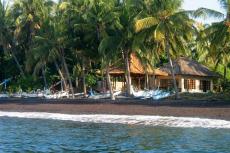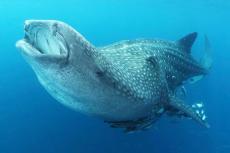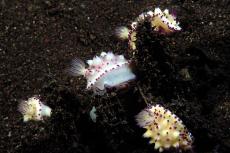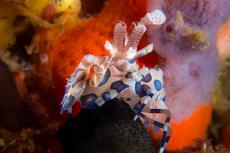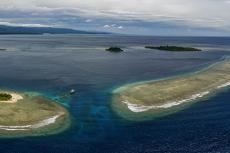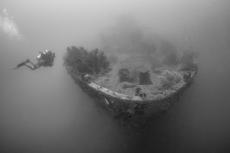We have reported on the plight of the sea turtles before. We have reported how they were being butchered by the thousands. And we have asked for your support and signatures on a petition to stop the slaughter of these ancient ocean citizens.
It is now time to report back that your support has made a real difference. But the fight is not quite over yet...
The phone call
It was in still in the wee hours of an early morning when Wayan Wiradnayana, the director of the Pro-fauna office on Bali received a call from an Austrian tourist. Whilst walking on Sanur beach, the man had witnessed two large turtles being loaded into a boat and hidden in a nearby hut. What happened next sounds unbelievable, but it is true.
Thanks to www.sos-seaturtles.ch and media coverage, the man was fully aware of the plight of the sea turtle on Bali and the name Profauna was stuck in his mind. The owner of a nearby restaurant helped him look up the correct telephone numbers, and Wayan wasted no time in informing the chief of police, the forestry department and the Bali marine police.
Time was of the essence because there was a strong possibility that the sea turtles might be moved on. Indeed, when the police arrived on site, the animals had already disappeared, and unfortunately, so had the determined tourist.
However, the marine police, not being easily deterred and being officers of the law, soon discovered where the sea turtles had been taken. They moved in to find both the green turtles, which were of a good size, and seized them. They were measured and tagged by the forestry department and set for release. The release took place a little time later as the tide was going out on Kuta Beach. As always, the spectacle attracted many residents and tourists, and provided a great opportunity for Profauna to distribute information leaflets about the endangered sea turtles.
In the Lion’s Den
The trade in sea turtles in Tanjung Benoa lies in the hands of two men, Pak Tami and Pak Hassan. One man who knows what is going on, is the Swiss-born Heinz von Holzen. He has lived on Bali for the past 12 years and owns the famous Bumbu-Bali Restaurant and Ruma-Bali Village. Understandably, he has mostly to work behind the scenes, but he has a number of people working undercover to keep him directly informed on what is happening on the sea turtle scene.
Instead of turning up at markets, as they did in the past, sea turtle eggs now come to Heinz’s place, where he incubates them in his many turtle rearing plants, and then releases them. Heinz literally buys the freedom of illegally caught turtles, so that they are spared the horrific end of being cut out of their shells alive.
The news that five sea turtles were being kept for a buyer in a hiding place on Pak Kami was brought to him by an informer from Tanjung Benoa. The main priority was to free the turtles as soon as possible and also to photograph the proceedings in order to provide material for the media and evidence for the Balinese authorities. How the trader would react to the camera was the least of my worries at that moment. The only thing that gave away our arrival was the Bumbu Bali Restaurant truck that was driven by Pak Madi, Heinz Von Holzen’s specialist for this sort of tricky business.
Although quite hardened to these sorts of things, I still found it challenging to keep my cool when confronted with this man—who has, in his lifetime, been responsible for the deaths of hundreds of thousands of sea turtles—to haggle with him over their price, as if they were bananas or coconuts!
Better to see him in a different light, such as through the viewfinder of my Nikon! The noise of the camera produced no reaction from him whatsoever, but the same could not be said for his side-kick, a stocky, sly looking man who was evidently Chinese. One word from Pak Madi put him in his place. Evidently, he was keen not to bungle the sale over a small disagreement.
With exaggerated politeness, he encouraged us to follow him, and after 15 minutes of insane driving, we arrived at the shed where the creatures were being kept. Both concrete basins measured around 5 x 5 metres and were filled with around 40cm of water. Here, our four adult green turtles were to be found, each one weighing more than 100 kilos, alongside a small hawksbill turtle.
The transporting and preparation for the release carried out by Heinz’s men is a procedure that has seen many years of practice. Late afternoon, as the tide was going out, the turtles were taken to the Holiday Inn Hotel beach and released back into the sea—a very moving moment! Back to their own environment, where up until their capture, they had been living for the past 30-40 years! It is highly possible that the turtles could live to double this age. See balifoods.com
Kuta Beach Demonstration
The backdrop was like the set of a TV commercial. White sand, blue sea, and in the foreground, dressed in white, the Profauna activists holding their banner. With rigid expressions, motionless and straight-faced, they picketed for the endangered sea turtles. Here, on the most famous of the Bali beaches, young women with the same look distributed leaflets amongst inhabitants and tourists alike.
Profauna demonstrations always cause a big stir in the media. This occasion was not any different. Cameras flashed, TV cameras filmed, and even an ARD cameraman used the opportunity to build the demonstration into a production he was already filming. Naturally, the place was also teeming with uniforms: the chief of police, the forestry department and other officials were all over the place.
In Indonesia, demonstrations and information campaigns are closely watched and taken very seriously. Profauna takes advantage of this, for in this country, it is the only way to get a strong grip on the protection of animals species. This is why the organisation also works closely alongside schools and universities. Profauna is however not only concerned with the protection of sea turtles, but with all endangered species throughout Indonesia.
Visiting the Governor
The meeting with the governor was scheduled for 10am. On our way to the government buildings we noticed a giant cloud of smoke. Fire engines with flashing lights and sirens blaring headed for the town centre. A large fire had broken out in Denpasar city centre. Therefore, it was understandable that the governor had to be excused from our meeting, and that instead, we were to meet with the Minister for the Environment, Ir.Ni Wayan Sudjj.
Even knowing the extent of the Governor’s influence, we were not disappointed by the way things turned out. It soon became clear that the minister was fully informed of the sea turtle plight and spoke perfect English. Our position was clear: According to Indonesian Law, (article 764-98 / April 1997) killing of sea turtles is forbidden, and trade over the border is seen as a violation of CITES convention, the international commission for the protection of endangered species.
Media matters
This is where image and perception matters. There is no clearer language than the more than 20,000 letters of protest sent all over the world and even more petition signatures. Hundreds of publications and the world-wide link www.sos-seaturtles.ch have drawn people’s attention to the murder of sea turtles on Bali.
And as Bali is currently struggling to keep every tourist it can, the Balinese have no other option but to take such issues very seriously. ►
When we began the first sea turtle campaign shortly after the fall of the Suharto regime around the turn of the millenium, around 25,000 animals were being massacred in the slaughter houses of Tanjung Benoa. Currently, around 3,000 are being killed in secret.
Of course, we refer to the positive direction in these developments, but stressed that police action must be continued and even increased so that an end is brought to all killings. Once this happens, we can show the more beautiful side of the dream island of Bali in the media, and not more of the bloody images from Tanjung Benoa.
The Cover-Up
Alibi-Island. This “turtle island” is located not far off the south coast of Tanjung Benoa. Tourists are herded out there on little boats to gawk and paw at the 30 sea turtles eeking out their miserable existence in the dirty waters of the lagoon and a concrete basin. Alongside them are cages containing birds, giant lizards not to mention a large python with tape wrapped round its mouth, the front part of which, incidentally, is missing, as it was crudely removed along with its fangs. The icing on the cake is that souvenirs made out of turtle shells are being sold there. It was an exhibition that would take the joy out of the day of any person—the few visitors present were nearly exclusively tourists from Asian countries.
By researching and closely observing the island, Profauna members and the journalist Daniel Peterlunger was able to gather clear evidence that “turtle island” was nothing more than a front and cover-up for the trade in sea turtles. Through the back doors of the compound, we were able to get some pictures of creatures stored on a small boat transferred to a hut lying directly opposite of a water basin. The shells and bones lying in the waste outside were further proof that slaughter was taking place here. As of this is writing, the photos taken of these proceedings are lying on the desk of the Minister of the Environment and are being channelled through all levels of government by the Profauna team.
In conclusion
The developments on Bali since we began our campaign in March 2006, shows very clearly that our “public relation” strategy with emphasis on obtaining media coverage is working. However, in order to remain the front line and support the actions of our comrades-in-arms on Bali, we are heavily dependent on sponsorship and donations. In the end, putting an end to the murder and trade of sea turtles on Bali comes down to who is the most determined to succeed!
Please visit www.sos-seaturtles.ch. We appreciate your support ■



